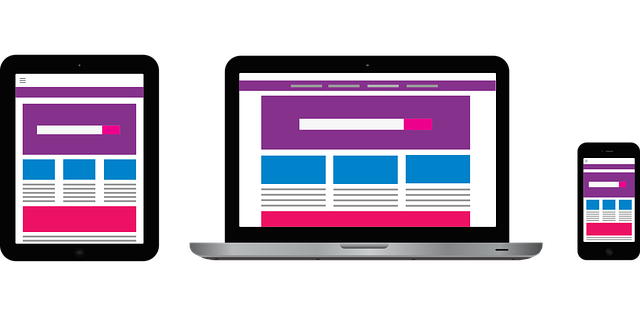User Experience (UX) in web design is paramount in today’s digital age. It’s no longer enough to create a visually appealing website; the site must also provide a seamless, enjoyable, and intuitive experience for users. The principles of UX focus on enhancing user satisfaction by improving the usability, accessibility, and pleasure provided in the interaction between the user and the product. By understanding these principles and implementing them effectively, web designers can create user-friendly web designs that keep users engaged and coming back for more.
Understanding the Principles of UX
The principles of UX are the backbone of effective web design. These principles include usability, accessibility, and delight, among others. Usability refers to how easy and efficient a website is for users to achieve their goals. This involves intuitive navigation, clear calls to action, and a logical flow of information. Accessibility ensures that all users, including those with disabilities, can access and use the website. This involves adhering to the Web Content Accessibility Guidelines (WCAG) set by the World Wide Web Consortium (W3C). Delight is about creating a positive emotional response from users through engaging design and interactive elements.
Usability – Making Websites Intuitive
Usability is a critical aspect of UX that ensures users can easily navigate and interact with a website. One of the most effective tools for improving usability is CSS Grid. This powerful layout system allows designers to create complex, responsive layouts with ease. By using CSS Grid, designers can ensure that their websites are not only visually appealing but also functional and easy to use. Another key aspect of usability is clear and concise content. Jakob Nielsen, a prominent figure in the field of web usability, emphasizes the importance of writing for the web. He suggests that web content should be scannable, with headings, subheadings, and bullet points to break up text and make it easier for users to find the information they need.
Accessibility – Designing for Everyone
Accessibility is another fundamental principle of UX that focuses on making websites usable for all people, regardless of their abilities or disabilities. This involves following guidelines such as WCAG, which provide a set of standards for making web content more accessible. These guidelines cover a wide range of issues, including providing text alternatives for non-text content, making all functionality available from a keyboard, and ensuring that content is robust enough to be interpreted reliably by a wide variety of user agents, including assistive technologies. In addition to following these guidelines, designers can also use tools like WAVE (Web Accessibility Evaluation Tool) to identify and fix accessibility issues on their websites.
Delight – Creating Positive Emotional Responses
Delight is about creating a positive emotional response from users through engaging design and interactive elements. This can be achieved through various techniques, such as micro-interactions, animations, and personalized content. Micro-interactions are small design elements that provide feedback to users, such as a button that changes color when hovered over or a form that shakes when an error occurs. Animations can also enhance the user experience by providing visual feedback and making interactions feel more natural. Personalized content, such as recommendations based on user behavior, can make users feel valued and increase their engagement with the website.
How to Create User-Friendly Web Designs
Creating user-friendly web designs involves implementing the principles of UX in a practical and effective way. This starts with conducting user research to understand the needs and preferences of your target audience. Tools like Google Analytics can provide valuable insights into user behavior, helping designers identify areas for improvement. Once you have a clear understanding of your users, you can start designing with their needs in mind. This involves creating a clear and consistent layout, using intuitive navigation, and ensuring that the website is responsive and accessible on all devices.
Responsive Design – Ensuring Usability Across Devices
Responsive design is a key aspect of creating user-friendly web designs. With the increasing use of mobile devices to access the internet, it’s essential that websites are optimized for all screen sizes. CSS Grid and Flexbox are powerful tools for creating responsive layouts that adapt to different devices. In addition to using these tools, designers should also consider the performance of their websites. According to a study by Google, 53% of mobile users will leave a site that takes longer than three seconds to load. By optimizing images, using efficient code, and minimizing HTTP requests, designers can ensure that their websites load quickly and provide a smooth user experience.
Consistency – Building Trust and Familiarity
Consistency is another important aspect of creating user-friendly web designs. This involves using a consistent layout, color scheme, and typography throughout the website. Consistency helps to build trust and familiarity with users, making it easier for them to navigate the site and find the information they need. It’s also important to maintain consistency across different platforms, such as desktop and mobile, to provide a seamless user experience. In addition to visual consistency, designers should also ensure that their content is consistent in tone and style. This involves using a clear and concise writing style, with headings, subheadings, and bullet points to break up text and make it easier to read.
The Role of Consumer Psychology
Consumer psychology plays a significant role in UX design. By understanding how users think and behave, designers can create websites that meet their needs and expectations. This involves using principles such as cognitive load, which refers to the amount of mental effort required to process information. By minimizing cognitive load, designers can make it easier for users to navigate and interact with a website. Another important principle is the concept of affordances, which refers to the perceived and actual properties of an object that determine how it can be used. By using clear and intuitive affordances, such as buttons that look clickable, designers can make it easier for users to understand how to interact with a website.
In conclusion, the importance of UX in web design cannot be overstated. By understanding and implementing the principles of UX, designers can create user-friendly web designs that enhance user satisfaction and engagement. Whether it’s through improving usability, ensuring accessibility, or creating delightful experiences, the goal is to provide users with a seamless and enjoyable experience that keeps them coming back for more.




